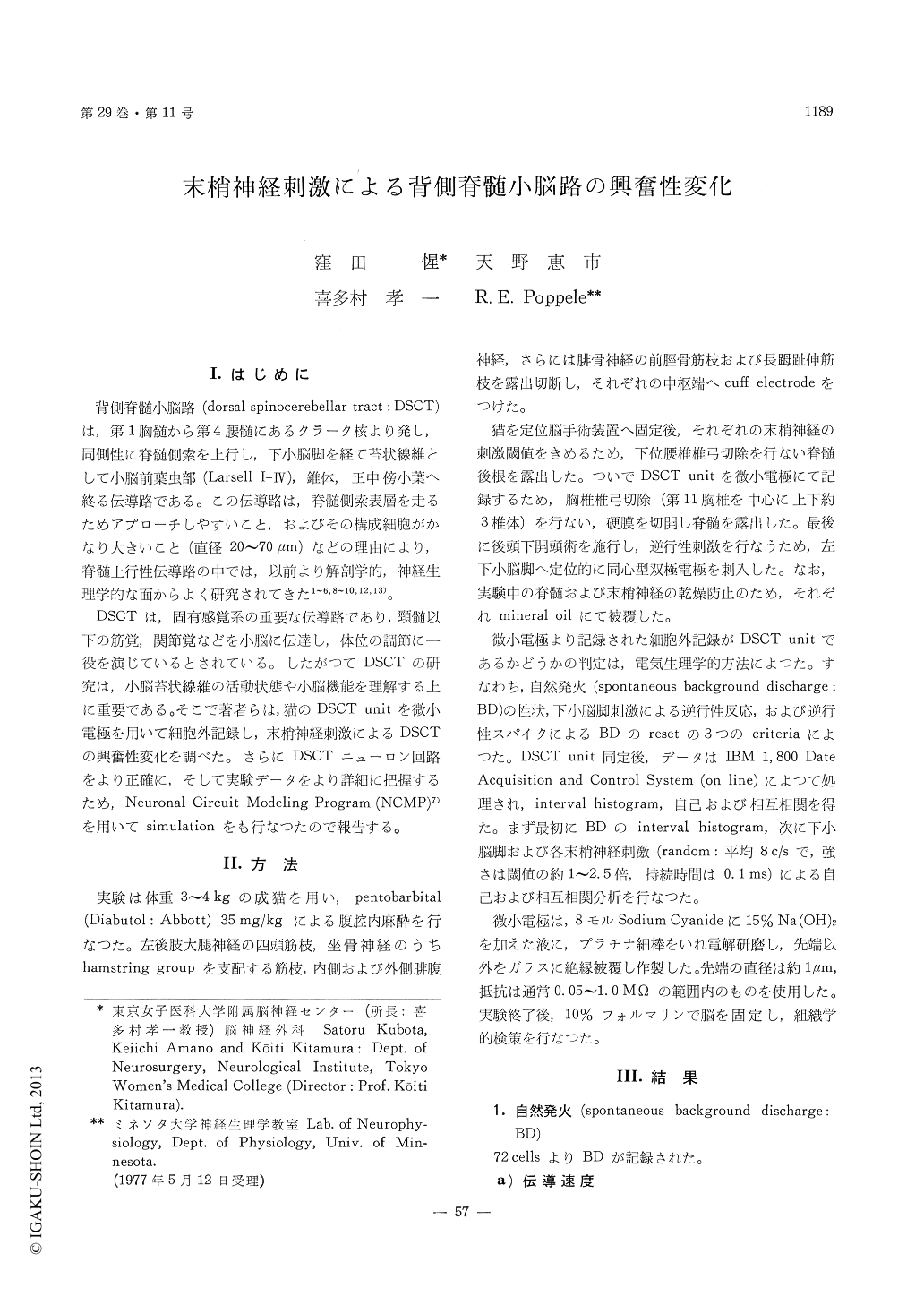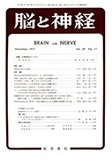Japanese
English
- 有料閲覧
- Abstract 文献概要
- 1ページ目 Look Inside
I.はじめに
背側脊髄小脳路(dorsal spinocerebellar tract:DSCT)は,第1胸髄から第4腰髄にあるクラーク核より発し,同側性に脊髄側索を上行し,下小脳脚を経て苔状線維として小脳前葉虫部(Larsell I-IV),錐体,正中傍小葉へ終る伝導路である。この伝導路は,脊髄側索表層を走るためアプローチしやすいこと,およびその構成細胞がかなり大きいこと(直径20〜70μm)などの理由により,脊髄上行性伝導路の中では,以前より解剖学的,神経生理学的な面からよく研究されてきた1〜6,8〜10,12,13)。
DSCTは,固有感覚系の重要な伝導路であり,頸髄以下の筋覚,関節覚などを小脳に伝達し,体位の調節に一役を演じているとされている。したがつてDSCTの研究は,小脳苔状線維の活動状態や小脳機能を理解する上に重要である。そこで著者らは,猫のDSCT unitを微小電極を用いて細胞外記録し,末梢神経刺激によるDSCTの興奮性変化を調べた。さらにDSCTニューロン回路をより正確に,そして実験データをより詳細に把握するため,Neuronal Circuit Modeling Program (NCMP)7)を用いてsimulationをも行なつたので報告する。
Excitability changes in the dorsal spinocerebellartract (DSCT) neurons of the cat were extracellularlystudied with correlation analysis.
Most of the interval histograms were classifiedas normal distribution, and occasionally bimodaldistributions were observed, which resulted froman occasional "double spiking" in the spontaneousbackground discharge (BD).
The conduction velocity was measured in 72DSCT fibers. The histogram showed a peak at40-50 M/S.
The majority of the units had BD with coef-ficient of variation less than 0.2, which suggestBD with regular firing.
Based on cross-correlelograms, DSCT responsesto electrical stimulation of the muscle nerves ofthe hind leg were classified into at least threetypes. Type 1 response, constituted approximatelyone-fifth of the total, is monosynaptic activation.Type 2 response, observed most frequently (47%),is inhibition of DSCT cells with a short latency.Type 3 responses, observed nearly as often as type2 (34%), is a long latency excitation, undoubtedlypolysynaptic.
Changes in stimulation intensity showed complexchanges in the pattern of response.
Type 1 and 2 responses were unaffected by in-creasing stimulus rate. Peak correlations in type3 response were reduced by increase in stimulusrate.
There were no data demonstrating feedbackcircuitry associated with collaterals of DSCT axons.This suggests that axon collaterals have no directeffect on the activity of DSCT cells.

Copyright © 1977, Igaku-Shoin Ltd. All rights reserved.


